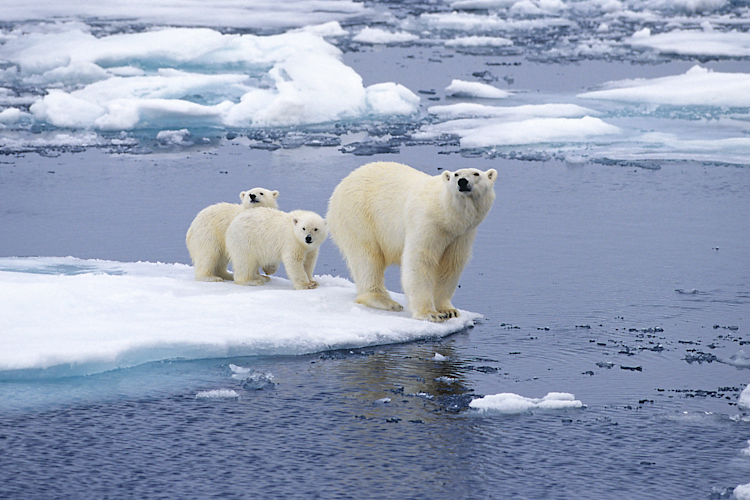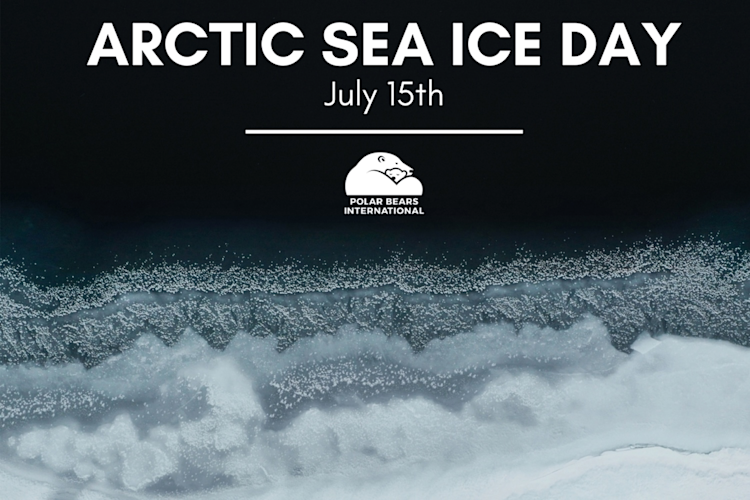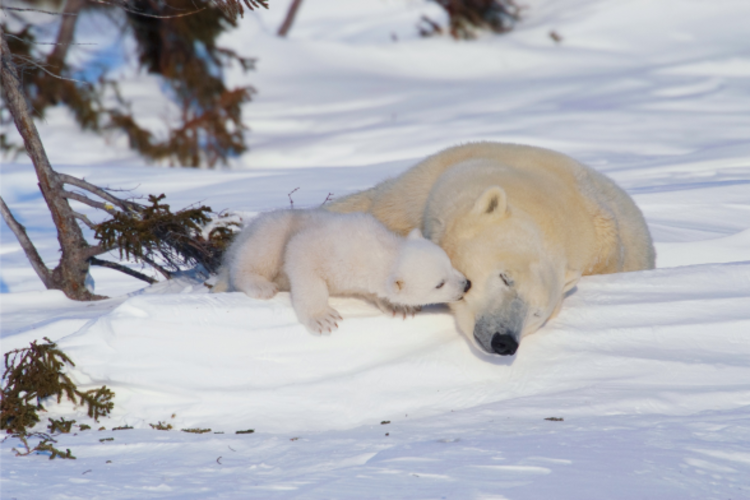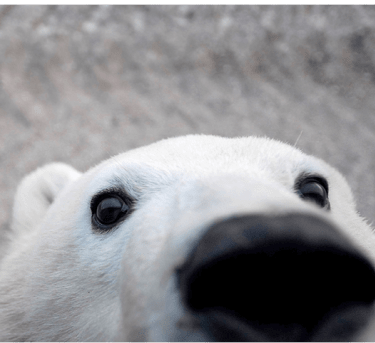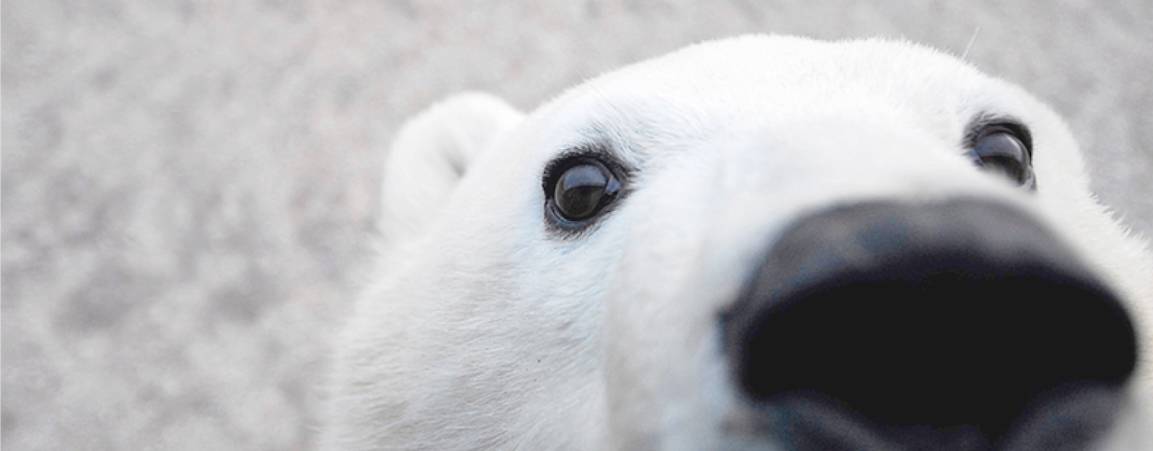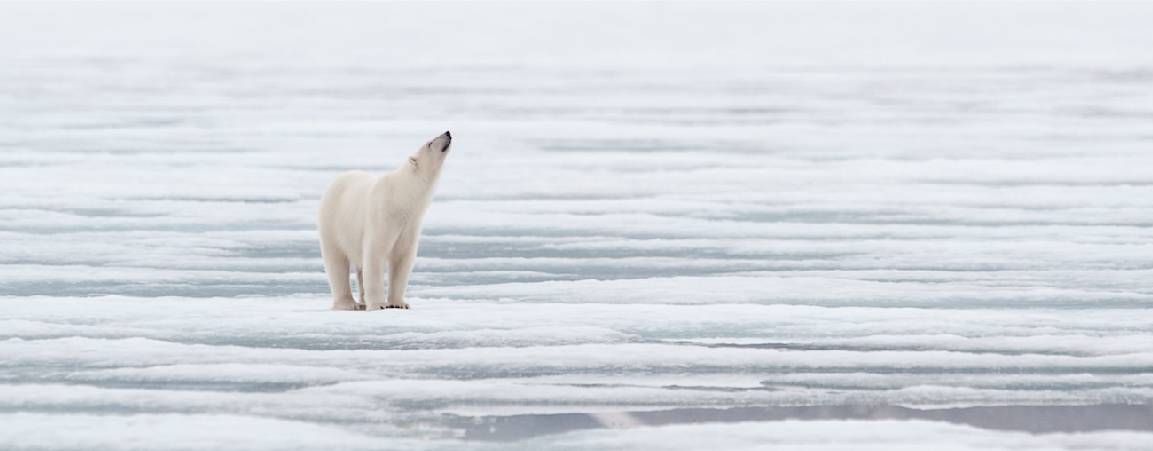
Arctic Sea Ice Day Ambassador Toolkit
Arctic Sea Ice Day is July 15th!
Polar Bears International’s Arctic Sea Ice Day is July 15th. We created the day to draw attention to the rapidly melting Arctic ecosystem, why it matters, and how we can help slow this trend. We also mark the day with the launch of our live Beluga Cam in partnership with explore.org, highlighting the annual return of these playful whales to the Churchill River estuary off Hudson Bay.

Photo: BJ Kirschhoffer
Talk About Climate!
Did you know that one of the best ways to save sea ice for polar bears by motivating action on climate warming is to talk about it? By including climate change in your everyday conversations, you can help make climate action a kitchen table issue and policy priority.
As a person of influence, you have an opportunity to talk about climate warming and its impacts on sea ice and polar bear populations and to make that conversation positive and solutions-focused. Scroll down to learn more.
Why Does It Matter?
The Arctic is now warming nearly four times as fast as the rest of the planet, causing the sea ice to melt. In several regions around the Arctic, this is reducing the time polar bears have to hunt seals, increasing their fasting period, and forcing them to rely on their fat stores for longer periods. If the Arctic continues to warm at the current rate, we will see fewer polar bears in fewer places across the Arctic, making them more vulnerable to extinction. A recent study predicts that the Southern and Western Hudson Bay polar bears — bellwethers for other polar bear populations — will likely become extinct if we fail to meet the goals set at the Paris Climate Agreement.
Sea ice is the Earth’s air conditioner, it helps keep our planet cool and regulates the Earth’s climate. Melting sea ice doesn’t just impact polar bears, it’s bad for people too. In order to protect polar bears and the sea ice we all depend on, we need to move away from using fossil fuels for energy altogether.
Sea ice is as important to the Arctic ecosystem as soil is to a forest. Sea ice is much more than a frozen hunting platform for polar bears: It supports the entire Arctic food chain! When ocean water gets cold enough to freeze, it expels salt, causing channels to form inside the ice. As sunlight filters through, algae grow in these channels, creating an underwater garden that forms the base of the food chain. Together, we can preserve this habitat for polar bears, people, and other wildlife.
Learn Why Polar Bears Need Sea Ice


“If we’re not talking about climate change, why would we care? And if we don't care, why would we do anything to fix it?”
— Katharine Hayhoe, climate scientist
Learn More About Arctic Sea Ice
Photo: BJ Kirschhoffer / Polar Bears International
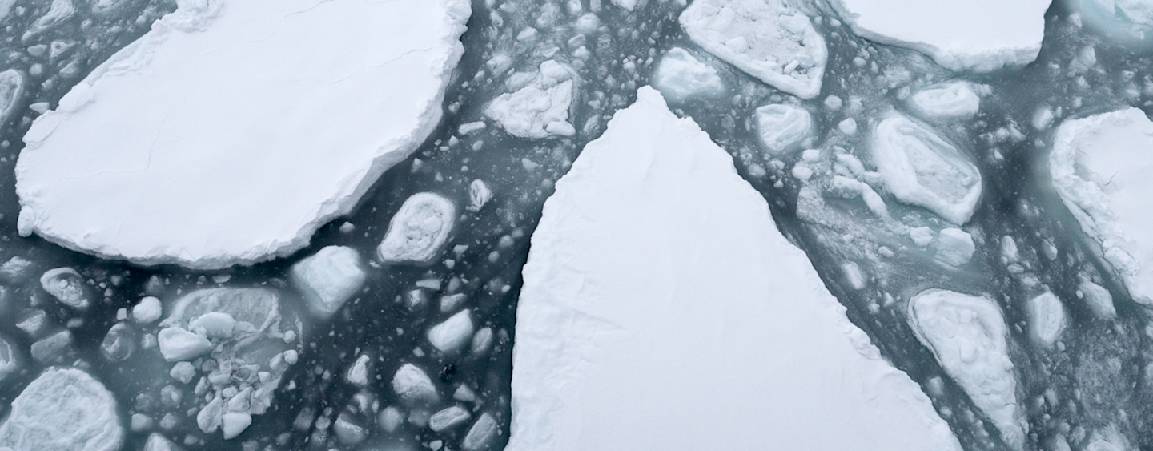


Create Your Own Content
Download one of our Arctic Sea Ice Day graphics and create your own content!
Key Links & Polar Bears International Handles
Facebook: @PolarBearsInternational
Instagram: @polarbearsinternational
TikTok: @polarbearsinternational
LinkedIn: Polar Bears International
YouTube: @PolarbearsinternationalOrg
BlueSky Social: @polarbearsinternational.org
X: @PolarBears
Short Link for more information: pbears.org/arcticseaiceday
Hashtags
#ArcticSeaIceDay #SaveOurSeaIce #TalkAboutClimate #ClimateAction
Sample Posts
The following are some sample posts for use on social media with your own visuals or our included graphics. Kindly tag Polar Bears International and/or share a link to our website. We deeply appreciate your support in spreading the word!

Photo: BJ Kirschhoffer / Polar Bears International
Make It Personal
Many places have been experiencing extreme weather events lately, making it the perfect time to talk about climate warming and melting Arctic sea ice.
Connect these events with melting sea ice and the importance of sharing your concern for the climate. For example: “Arctic sea ice is melting and we’re experiencing record heat and a prolonged drought. On #ArcticSeaIceDay, July 15, let’s talk about the need to act on climate change—for polar bears and all of us! #TalkAboutClimate
Share What You Learn or Re-Purpose Our Content
Discover the four major sea ice eco-regions with our chief scientist, Dr. Steven Amstrup! These four regions are defined by how the sea ice forms and changes in different parts of the Arctic throughout the year and how polar bears respond to these changes.
Explore facts on our website about Arctic sea ice and learn more about current sea ice conditions from the National Snow and Ice Data Center.
Don a new Keep It Cool t-shirt and let it spark a conversation on why protecting a future for polar bears and their Arctic sea ice home matters to you. Share a photo of you in your shirt on social and tag us using the hashtag #TalkAboutClimate
Celebrate the arrival of belugas whales in the Churchill River estuary's warm waters, and tune into our live Beluga Cams for Arctic inspiration. Learn why belugas need sea ice and take part in the Beluga Bits citizen scientist project!
Webcast: Building a Bigger, Better Bear Safety Toolbox
As polar bears spend more time on land in more places, we need more safety tools to better support the people that live with the world’s biggest bear. Polar Bears International is developing new tools, testing existing ones and piloting projects to collaboratively expand polar bear safety across the Arctic. Tune in to learn more about our process and partners, some new tools being created, and how we can keep people safe and polar bears in the wild. (Grades 4-12)
As polar bears spend more time on land in more places, we need more safety tools to better support the people that live with the world’s biggest bear. Polar Bears International is developing new tools, testing existing ones and piloting projects to collaboratively expand polar bear safety across the Arctic. Tune in to learn more about our process and partners, some new tools being created, and how we can keep people safe and polar bears in the wild. (Grades 4-12)
Live Chat: Staying Safe in Bear Country
As polar bears spend more time on land in more places they will come into more contact with people. We want to ensure that everyone has the education, tools, and support that they need for both species to stay safe. Tune in to learn about how we are supporting human-polar bear coexistence, developing new tools, testing existing equipment, and helping share and spread knowledge across the north.
As polar bears spend more time on land in more places they will come into more contact with people. We want to ensure that everyone has the education, tools, and support that they need for both species to stay safe. Tune in to learn about how we are supporting human-polar bear coexistence, developing new tools, testing existing equipment, and helping share and spread knowledge across the north.
Live Chat: Bye Bye from Tundra Buggy One
That’s another great polar bear season wrapped! Let’s highlight our favourite moments from the season and discuss what’s next for these beautiful creatures.
That’s another great polar bear season wrapped! Let’s highlight our favourite moments from the season and discuss what’s next for these beautiful creatures.
